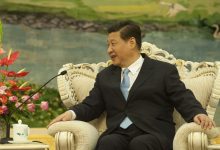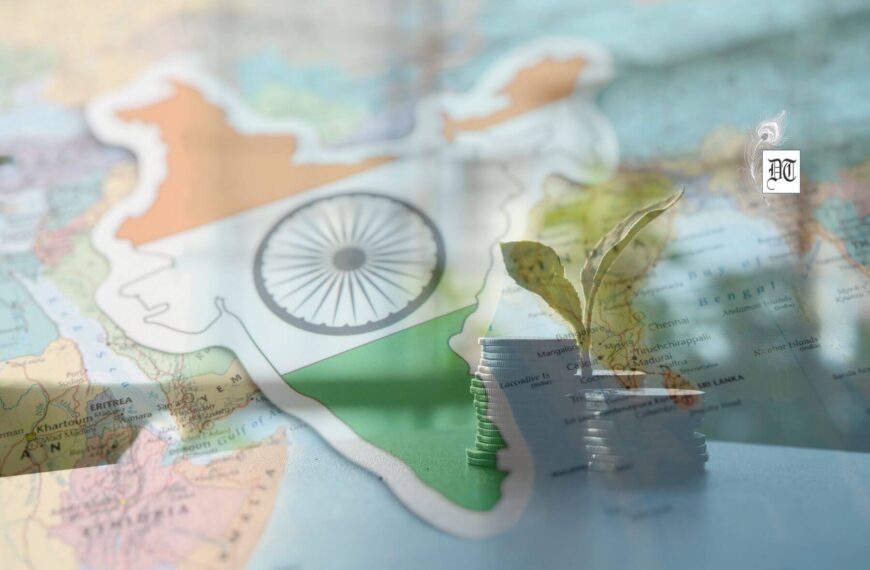The capitalist realtor-turned US president, Donald Trump, is a pseudo-socialist. In true capitalism, there is no place for government interference in economic affairs beyond the minimum necessary. But, Trump is championing the causes of domestic economic protection, instead of freedom, and anti-immigration, somewhat along the lines of communist China. Here’s an analysis, for Different Truths.
Had the Friedmans, Milton and Rose, the last of the laissez-faire doctrine proponents, been alive today, they would have probably called the capitalist realtor-turned US president, Donald Trump, a pseudo-socialist. In true capitalism, there is no place for government interference in economic affairs beyond the minimum necessary. The champions of capitalism support the Darwinian Theory that talks about the survival of the fittest. Nobel laureate Milton Friedman and his wife Rose co-authored ‘Capitalism and Freedom’ asserted that “our (US) free society is in danger.” The book forcefully and clearly expressed what went wrong in the US and the global capitalist system and how to correct it to restore America’s future economic health. They would have been shocked by the actions of ultra-rightist US President Donald Trump championing the causes of domestic economic protection, instead of freedom, and anti-immigration, somewhat along the lines of communist China. But then, the Friedmans were economic philosophers, more romantic than realistic. Trump is a practical capitalist. For good reasons, Trump finds virtue in tighter government control on the import of people, products, and services to arrest his country’s shrinking industry and jobs for the locals. The US is strongly feeling the heat of the ‘unfair’ trade competition from China, Germany, and EU, Japan, South Korea, Canada, and Mexico. Over the years, these trade and services competitors have grown manifold at the cost of the US economy, especially in the large, medium and small-scale manufacturing activities.
For instance, $486-million Walmart of the US, the world’s largest company by sales, deals in products, almost 80 percent of which are sourced from China. To many, Walmart is working more to China’s benefit than that of the US. The latter lost lakhs of jobs as its industry failed to combat the challenge of competition from low-cost Chinese supplies. Average American consumers may be happy, but not those unemployed. The USA has lost its once global leadership in steel, energy, engineering, and microchips to countries such as China, Japan, South Korea and Europe. Communist China exercises firm control over domestic manufacturing, export and even the exchange rate of its currency, Renminbi (Yuan). In the last four years, one Chinese Yuan almost constantly equalled 0.16 US dollar. This is unthinkable for a country, which has been running the world’s largest trade surplus, year after year. China’s overall global trade surplus for 2017 was $422.5 billion. Its trade surplus with the US soared 13 percent year-on-year to 1.87 trillion Yuan (about $288 billion). Nearly 70 percent of its global trade surplus comes from the US. On the contrary, the US suffered a global trade deficit in goods and services of $566 billion in 2017, the world’s largest. The US trade deficit in goods, without services, was $810 billion. Obviously, the US can’t sustain such heavy import trade pressures from China and other countries any longer. This may explain why the US is moving towards protectionism. Since the last global financial crisis in 2008, it has taken over 1,000 protectionist measures. Even former Democratic Party president Barrack Obama was no exception. Other global exporting countries too have taken protectionist measures during this period, but none to match the US actions.
Therefore, President Trump’s latest announcement, imposing hefty tariffs on imported steel and aluminum — selectively, in some countries — to protect US producers is not surprising. Trump seems to be prepared to take the risk of retaliation from major trade partners like China and Europe. Trump has made it clear that the US plans to impose reciprocal taxes in an outright departure from global trade norms. “We will soon be starting reciprocal taxes so that we will charge the same thing as they charge us. $800 Billion Trade Deficit leaves no choice!” President Trump tweeted. Such taxes would mean that the US will expect developing countries to grant higher trade concessions to developed countries like itself. This will contradict the WTO’s concept of non-reciprocity in trade negotiations between developed and developing countries. However, tweets Trump: “when a country (US) is losing many billions of dollars on trade with virtually every country it does business with, trade wars are good, and easy to win.”
India is comparatively a small global trading nation running large overall trade deficits year after year. Not only that the US is India’s No. 1 trade partner, it is also India’s largest source of trade surplus. Last year, India’s trade surplus with the US was $24 billion. With China, India had $52-billion trade deficit, its highest with any country. India fears that after the IT industry, it is now the turn of the manufacturing sector to brace itself for a possible jolt from the Trump regime. Washington DC has already sounded out to New Delhi that it would soon take steps to bridge the bilateral trade gap. India is also worried that the countries like China will force higher export of commodities such as steel to India, following US import restrictions.
Under such circumstances, India will have little choice but to impose much higher import duties to protect its own producers from international dumping. India has begun to legally examine the US move to secure its local industry. The protective trade action by the US, throwing a challenge to the World Trade Organisation (WTO) and its principles, should, in a way, embolden India to strongly pursue its emphasis on domestic manufacturing. Interestingly, Indian steel baron Sajjan Jindal supported the Trump action. Jindal wants India to impose a similar tariff barrier on steel to protect its industry. Significantly, President Trump’s protectionist programme finally exposes the inbuilt fallacy of capitalism and free trade.
Nantoo Banerjee
©IPA Service
Photo from the Internet





 By
By

 By
By